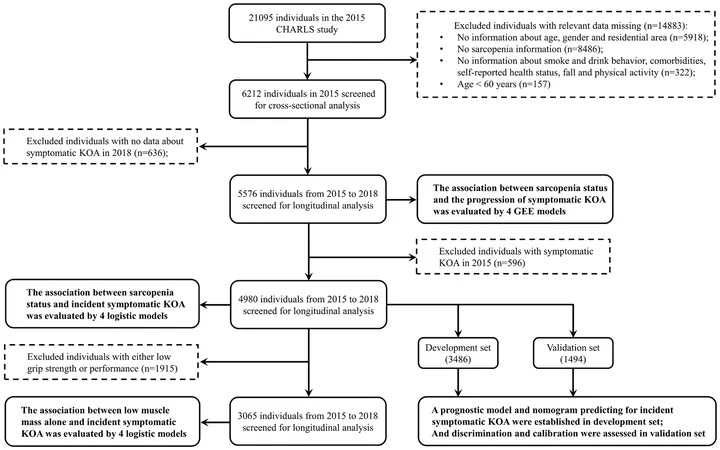
Unveiling the Hidden Link: How Sarcopenia Influences Knee Osteoarthritis Risk in Older Chinese Adults
2024-11-28
Author: Wei Ling
Introduction
In a groundbreaking study focused on China's aging population, researchers have uncovered the troubling link between sarcopenia—a debilitating condition characterized by the loss of muscle mass and strength—and symptomatic knee osteoarthritis (KOA). As both conditions are prevalent among older adults, understanding their interrelationship is critical for improving health outcomes in this demographic.
Methodology
Utilizing data from the China Health and Retirement Longitudinal Study (CHARLS), researchers analyzed information from 6,212 individuals aged 60 and above collected over two waves, 2015 and 2018. Sarcopenia was assessed based on the criteria set forth by the Asian Working Group for Sarcopenia in 2019. To determine the impact of sarcopenia on knee osteoarthritis, advanced logistic regression and generalized estimation equations were employed, culminating in the development of a predictive nomogram to assess the risk of developing KOA.
Findings Uncovered
The results were striking: - At the beginning of the study in 2015, the prevalence of symptomatic KOA was reported at 12.7%. - Over three years, participants with sarcopenia showed a staggering 91% increased risk of developing new-onset symptomatic KOA compared to their non-sarcopenic counterparts (Odds Ratio: 1.91, 95% Confidence Interval: 1.15–3.18). - Notably, the link was particularly apparent in females with low muscle mass, where the risk soared (Odds Ratio: 2.58). The predictive model, which incorporated various factors including age, gender, body mass index, health status, comorbidities, fall history, and physical activity, demonstrated a commendable discrimination capability (AUC = 0.744).
The Hidden Risks of Sarcopenia
As outlined by experts, sarcopenia's implications extend beyond mere muscle loss; it significantly contributes to systemic inflammation and joint deterioration, further exacerbating conditions like KOA. The similarities in risk factors for both sarcopenia and KOA—such as aging, obesity, and physical inactivity—create a storm of challenges for older adults. Research highlights that, globally, osteoarthritis affects approximately 300 million individuals, leading to considerable disability and diminished quality of life. This interconnectedness between sarcopenia and KOA reveals an urgent need for preventive measures.
Broader Implications and Insights
The need for early screening and proactive interventions in the management of sarcopenia cannot be overstated. Healthcare professionals are being urged to focus not just on treating KOA but also on addressing muscle strength and mass in older populations to reduce the incidence of osteoarthritis. Moreover, understanding that the relationship between muscle health and joint integrity can guide therapeutic strategies. Simple initiatives, including promoting physical activity, tailored exercise regimens, and nutritional enhancements (such as protein intake), could be vital in combating the adverse effects of sarcopenia.
Conclusion
This study stands out as the first comprehensive longitudinal analysis illustrating the link between sarcopenia and knee osteoarthritis in an older Asian population. By developing a robust prognostic model, the researchers have equipped clinicians with a valuable tool for identifying individuals at high risk of KOA. As public health continues to grapple with the challenges posed by an aging population, prioritizing muscle health will be imperative to enhance the longevity and quality of life for millions. Stay tuned for upcoming findings as we continue to explore the significant intersections of aging, sarcopenia, and osteoarthritis! What other hidden health risks lie in wait for our aging society?




 Brasil (PT)
Brasil (PT)
 Canada (EN)
Canada (EN)
 Chile (ES)
Chile (ES)
 España (ES)
España (ES)
 France (FR)
France (FR)
 Hong Kong (EN)
Hong Kong (EN)
 Italia (IT)
Italia (IT)
 日本 (JA)
日本 (JA)
 Magyarország (HU)
Magyarország (HU)
 Norge (NO)
Norge (NO)
 Polska (PL)
Polska (PL)
 Schweiz (DE)
Schweiz (DE)
 Singapore (EN)
Singapore (EN)
 Sverige (SV)
Sverige (SV)
 Suomi (FI)
Suomi (FI)
 Türkiye (TR)
Türkiye (TR)